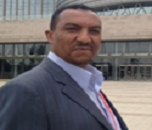
Abdusemed Mussa Ali,
Walden University School of Health Science, Ethiopia
Title: Risky Sexual Behavior and Factors Associated with it among Public and Private Secondary School Students in Addis Ababa: a Cross-Sectional Comparative Study
Biography
Biography: Abdusemed Mussa Ali,
Abstract
Introduction: The contribution of the school type towards developing risky sexual behaviour by the students has not been explored well. Thus, this study tried to compare Risky Sexual Behavior and Factors Associated among Public and Private Secondary School Students in Addis Ababa, Ethiopia
Objective: To assess the prevalence of risky sexual behavior and factors associated with it among public and private secondary school students in Addis Ababa.
Method and material: A comparative cross sectional study was conducted from February15- Mar.16, 2015.A multistage random sampling technique was used to identify secondary schools. Study participants were selected using simple random sampling technique. Two population proportion formula was used to calculate a total sample size of 1037 students (517 public 518 private). Data was summarized using descriptive statistics including mean, proportion and standard deviation and inferential statistics such as chi-square test and binomial logistic regression. Ethical clearance was obtained from Debre Markos University.
Result: A total of 1,037 students (519 public and 518 private) participated in the study making the response rate 98.8%.Among all the students (public and private), a quarter of them (264(25.5%)) had started sexual intercourse at the mean age of 16.39years (+SD 1.7). Of those who stared sex, 188 (71.2%) of them reported risky sexual practices. The prevalence of risky sexual behaviour in public and private schools were 73.28 % and 69.17%, respectively. The difference between the two categories is not statistically significant (p>0.05).

